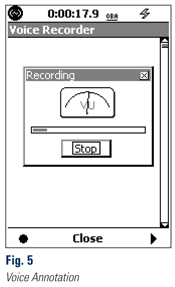As the cornerstone voice of the development of artificial intelligence, data annotation is an important link in the development of artificial intelligence. Audio or speech recorded in any format can be understood by machines through machine learning. NLP-based speech recognition models require annotated audio so that applications such as chatbots or smart devices can understand the sounds more easily.
What are voice annotations?

Speech annotation is a relatively common type of annotation in the data annotation industry. The speech in the audio file contains different words and sentences aimed at the listener. Using special data tagging techniques in voice tagging , such phrases in audio files can be recognized by machines. In NLP or NLU, machine algorithms for speech recognition need speech annotations to recognize such audio. It is equivalent to installing “ears” on the machine, so that it has the function of “listening”, so that the machine can realize accurate speech recognition.
Specific application scenarios of voice annotation:
1. Speech recognition
Real-time speech recognition of text can be applied to various scenarios such as voice chat, voice input, voice search, voice order, voice command, voice question and answer, etc. In daily life, such as voice transcription of customer service calls, conference transcription, communication products Voice input and transcription, voice medical records, automatic generation of movie subtitles, and smart home commands such as TV sets all use this technology. In the medical field, voice is also commonly used to generate and edit professional medical reports.
2. Speech synthesis
Speech synthesis can convert any text information into a standard and smooth voice in real time, which is equivalent to installing an artificial mouth on the machine. For example, real-time broadcast in the app, synthesis of the voice of a specific person, speech synthesis of verification code content, voice prompts in various scenarios such as customer service, navigation software, halls, vending machines, language pronunciation learning, and portability of voice early education machines.

3. Voiceprint recognition
Voiceprint recognition is a kind of biometric technology, also known as speaker recognition, including speaker identification and speaker confirmation. Voiceprint recognition is to convert the acoustic signal into an electrical signal, and then use a computer to identify it. For example, use voiceprint passwords for identity authentication, login, authorization, check-in, public security identity feature storage, voice wake-up, etc
